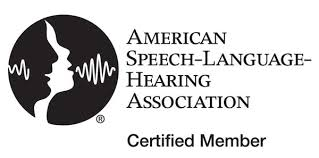Apraxia of Speech: Understanding the Essentials
What Is It?
It's when the brain fails to plan and coordinate muscle movements for specific actions.Also referred to as...
- Developmental or childhood apraxia of speech (DAOS or CAS)
- Verbal (a)/(dys)praxia
- Developmental verbal dyspraxia (DVD)
- Dyspraxia of speech
- Motor dyspraxia
Explore Our Goal Achieving, Client Centered Products
This disorder happens when the signal from the brain is changed or broken on it's way to the mouth.
Every word that comes out of our mouth is planned by our brain before we say it. Our brain works very fast to put sounds into words and words into sentences.
When we use "filler words" such as "uh", or "um", or my least favorite word...
..."like", the brain is giving our mouth "time to catch up" with the signal it is sending.
When that signal gets changed or broken, it makes voluntary movements for sound and word production difficult (see examples below).
Just to be clear, apraxia of speech does NOT mean someone has weak mouth muscles.
You can read here about one mother and daughters journey with apraxia.
What Is an Apraxia of Speech Disorder?
There are two types that involve Speech Pathologists:ORAL - the person has problems making voluntary movements of mouth muscles.
Example:
The person can randomly stick their tongue out at you, but if you ASK
them to do it... they can't.
VERBAL (more common) - the person has problems with their ability to plan and program voluntary movements to say sounds and words.
Example:
If you ask the person to say banana 4 times, they might say...
Apraxia of speech can be:- ban-nana
- na-bana
- ba-bana
- bana-bana
Developmental, which
affects children from birth.
Or...
Acquired which can affect a person at any age, but most often affects adults.
What Causes It?
Similar to some speech disorders, SLPs are not sure what causes it. Like adults, children can get acquired apraxia from a stroke, tumor, or head injury. Apraxia of speech seems to affect more boys than girls.Caruso & Strand (1999) compiled some common factors they looked for when evaluating a child who was thought to have developmental apraxia. They suggested that apraxia of speech may be present if:
- a certain genetic syndrome existed (ex. Down, fragile X)
- a child had a history of neurological disease or damage
- it was suspected in a family member
- a child showed excessive motor activity and withdrawl
- a child had gross/fine motor incoordination
- abnormal feeding patterns were observed
- abnormalities were observed during imitative play with sounds or facial expressions
- there was a family history of a communication and/or writing disorder or learning disabilities
- feeding problems
- little vocal play or babbling
- shown little imitation in infancy
- delays in early language
- behavioral disorders, temper tantrums, and inflexibility in social situations
- difficulty making normal progress in speech therapy
- to say a word many times before they say it right
- more errors as word length increases
- receptive language that exceeds expressive language
What Does It Affect?
A child can be mild enough that they may only have one or two speech errors or occasionally struggle with some multi-syllable words...or...
...severe enough where a child cannot communicate at all (only says vowel sounds) and needs/uses another way to communicate such as sign language or a communication board.
If a child has a motor deficit it will more than likely influence the development of phonology and other language abilities (Caruso & Strand, 1999). Apraxia of speech may or may not affect:
- vocabulary
- organization of spoken information
- grammar
- reading
- writing
- spelling
- math
- coordination
- chewing
- swallowing
SEE ALSO: The Best Free App for Speech Therapy
What Does an SLP Do to Help?
Speech-Language Pathologists have a variety of approaches they use with children who have apraxia.Different approaches focus on 4 types of cueing, such as:
- Tactile - touch, manipulation
- Auditory - hearing
- Kinesthetic - body movement
- Visual - pictures, watching mouth in mirror
- concentrated drill (both imitative and on command) of isolated movements of the tongue and lips
- imitation of sustained vowels and consonants
- imitation of syllables and words
- slow rate and facilitate self-monitoring
- introduce core vocabulary
- carrier phrases to provide a basis for increased meaningful sentences
- rhythm, intonation, and stress, paired with arm and leg movements to help a child understand speech motor sequencing
- tools that would develop and heighten perception and awareness in a child's mouth
What Can I Do About It?
Shelley L. Velleman Ph.D., CCC-SLP offers some excellent tips for what parents can do for their child when working with them at home.She suggests that low-pressure verbal activities are the most important thing parents can do to help. Some examples are:
- songs (monkeys swinging in the tree or jumping
on the bed
, Old MacDonald
)
- poems
- verbal routines (pat-a-cake
, Willaby Walloby Woo)
- repetitive books (i.e. Brown
Bear, Brown Bear, What Do You See?
, Dear Zoo
, Goodnight Moon
)
- daily routines (prayers, social routines, pledge of allegiance)
Examples:
When you are getting
ready to eat dinner you can say the following words to a tune of your
choice (nursery rhymes are easiest)
Eat, eat, eat, I like to eat, I like to eat, eat, eat, eat
Eat, eat, eat, I like to eat, I like to eat, eat, eat, eat
This example can be repeated for just about any activity: swim, bathe, walk, run, drive, shop, play, slide, brush (hair or teeth), climb, wave, drink, crawl, etc.
She recommends labeling instead of counting objects in books:
Examples:
When reading a book and
you come across a picture of more than one thing(ex. 2 or more dogs).
Instead of saying "Two dogs"
Say: "Two dogs, (point to each one and say) dog, dog"
Instead of saying "Two dogs"
Say: "Two dogs, (point to each one and say) dog, dog"
and...
Vebalizing repetitive activities:
Examples:
When setting the table
you can say
Plate, Plate, Plate, Plate, Plate, Plate
or Knife, Knife, Knife, Knife, Knife, Knife
Plate, Plate, Plate, Plate, Plate, Plate
or Knife, Knife, Knife, Knife, Knife, Knife
As boring as it might sound, this is easy to do and easy to make fun. So go ahead and act silly, be over dramatic, and repeat words 4-5 times or more.
Is it overkill?... Yep.
Will you feel weird?... Maybe.
Will there be times that you don't want to do it?... You bet.
Will it help your child?... Absolutely!
SEE ALSO: The Best Books for Speech Therapy Practice
If you have seen some modern day cartoons, they repeat things A LOT! That is because we learn by repetition.
I don't mean to promote specific TV shows but Dora The Explorer
The song has two very short verses and then the singer says "I'm the map" 12 times straight! and the song is over.
Above all, and this is always easier said than done...exercise as much patience as possible. This disorder is very frustrating for the individual and can be for the whole family.
If you suspect that your child has apraxia of speech, see a Speech-Language Pathologist right away. They will be able to discuss your options including the possibility of using sign language and/or a communication board.
Back to top
of apraxia of speech
Resources We Like
Apraxia-Kids.orgNational Institute on Deafness and Other Communication Disorders (NIDCD)
Sources
Caruso, A.J., & Strand, E.A. (1999). Clinical management or motor speech disorders in children. New
York, NY: Thieme Medical
Publishers, Inc.
Haynes, S. (1985). Developmental apraxia of speech: Symptoms and treatment. In D. Johns
(ed.), Clinical Management of Neurogenic
Communication Disorders (pp. 259-266). Boston: Little, Brown
& Co.
Activities and Product Discounts, Oh My!
Sign up for Terrific Therapy Emails
Your information is 100% private & never shared.
Homepage
>
Apraxia of Speech




























